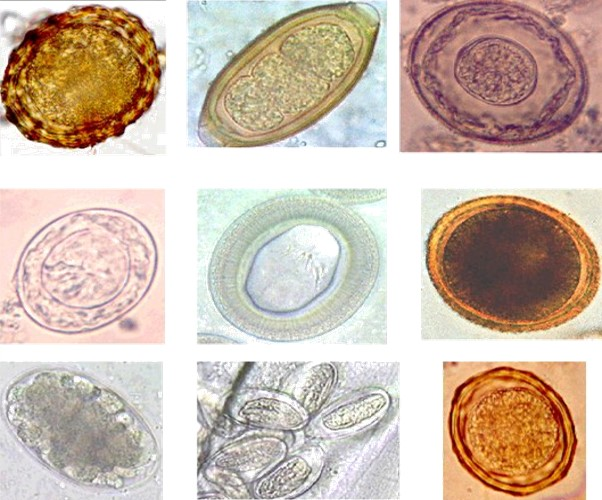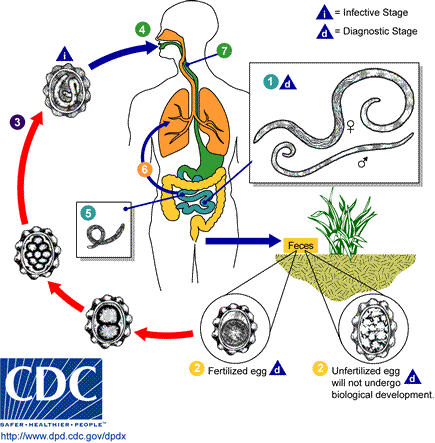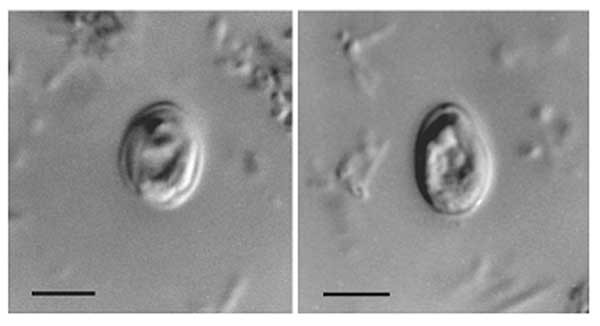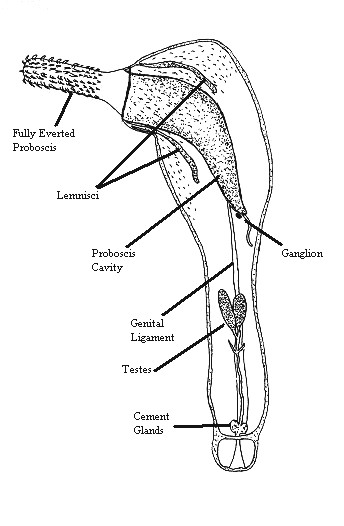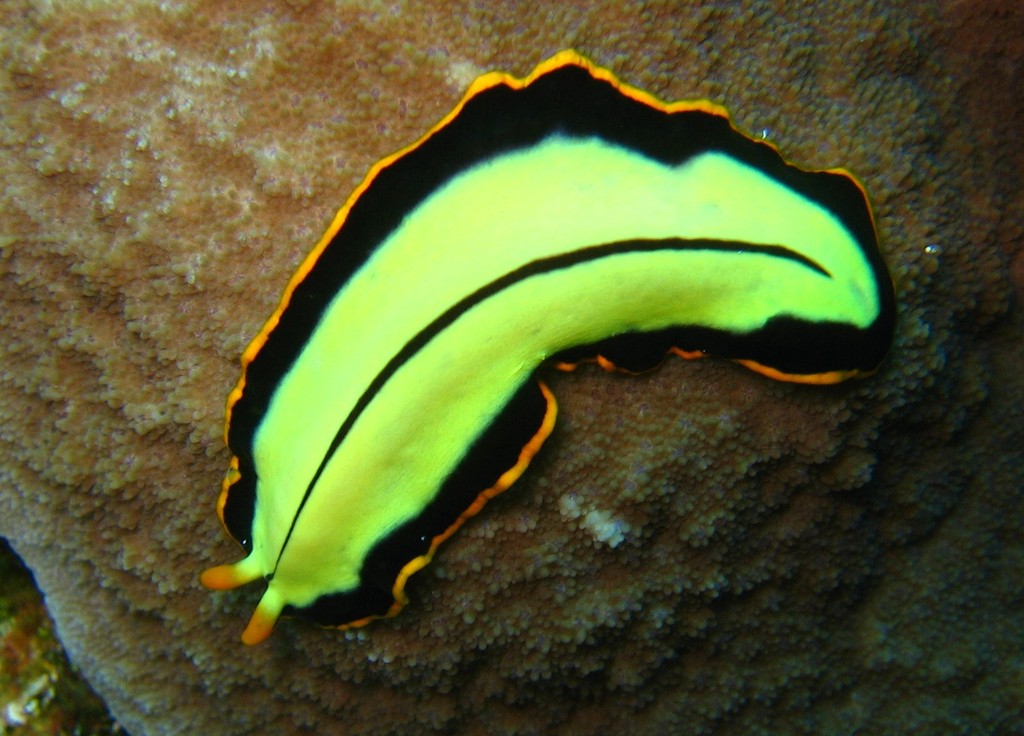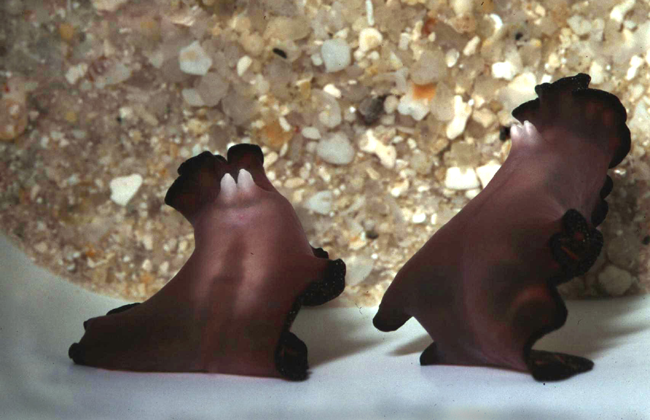|
Helminths
Parasitic worms, also known as helminths, are a polyphyletic group of large macroparasites; adults can generally be seen with the naked eye. Many are intestinal worms that are soil-transmitted and infect the gastrointestinal tract. Other parasitic worms such as schistosomes reside in blood vessels. Some parasitic worms, including leeches and monogeneans, are ectoparasites thus, they are not classified as helminths, which are endoparasites. Parasitic worms live in and feed in living hosts. They receive nourishment and protection while disrupting their hosts' ability to absorb nutrients. This can cause weakness and disease in the host, and poses a global health and economic problem. Parasitic worms cannot reproduce entirely within their host's body; they have a life cycle that includes some stages that need to take place outside of the host. Helminths are able to survive in their mammalian hosts for many years due to their ability to manipulate the host's immune respons ... [...More Info...] [...Related Items...] OR: [Wikipedia] [Google] [Baidu] |
Helminthiasis
Helminthiasis, also known as worm infection, is any macroparasite, macroparasitic disease of humans and other animals in which a part of the body is infected with parasitism, parasitic worms, known as helminths. There are numerous species of these parasites, which are broadly classified into cestoda, tapeworms, trematoda, flukes, and nematode, roundworms. They often live in the gastrointestinal tract of their host (biology), hosts, but they may also burrow into other organ (anatomy), organs, where they induce physiological damage. Soil-transmitted helminthiasis and schistosomiasis are the most important helminthiases, and are among the neglected tropical diseases. These group of helminthiases have been targeted under the joint action of the world's leading pharmaceutical industry, pharmaceutical companies and non-governmental organizations through a project launched in 2012 called the London Declaration on Neglected Tropical Diseases, which aimed to control or eradicate certain n ... [...More Info...] [...Related Items...] OR: [Wikipedia] [Google] [Baidu] |
Intestinal Worms
An intestinal parasite infection is a condition in which a parasite infects the gastro-intestinal tract of humans and other animals. Such parasites can live anywhere in the body, but most prefer the intestinal wall. Routes of exposure and infection include ingestion of undercooked meat, drinking infected water, fecal–oral transmission and skin absorption. Some types of helminths and protozoa are classified as intestinal parasites that cause infection—those that reside in the intestines. These infections can damage or sicken the host (humans or other animals). If the intestinal parasite infection is caused by helminths, the infection is called helminthiasis. Signs and symptoms Signs and symptoms depend on the type of infection. Intestinal parasites produce a variety of symptoms in those affected, most of which manifest themselves in gastrointestinal complications and general weakness. Gastrointestinal conditions include inflammation of the small and/or large intestine ... [...More Info...] [...Related Items...] OR: [Wikipedia] [Google] [Baidu] |
Nematoda
The nematodes ( or ; ; ), roundworms or eelworms constitute the phylum Nematoda. Species in the phylum inhabit a broad range of environments. Most species are free-living, feeding on microorganisms, but many are parasitism, parasitic. Parasitic worms (helminths) are the cause of Soil-transmitted helminthiasis, soil-transmitted helminthiases. They are classified along with arthropods, tardigrades and other moulting animalia, animals in the clade Ecdysozoa. Unlike the flatworms, nematodes have a tubular digestion, digestive system, with openings at both ends. Like tardigrades, they have a reduced number of Hox genes, but their sister phylum Nematomorpha has kept the ancestral protostome Hox genotype, which shows that the reduction has occurred within the nematode phylum. Nematode species can be difficult to distinguish from one another. Consequently, estimates of the number of nematode species are uncertain. A 2013 survey of animal biodiversity suggested there are over 25,000. Es ... [...More Info...] [...Related Items...] OR: [Wikipedia] [Google] [Baidu] |
Ascariasis
Ascariasis is a disease caused by the parasitic roundworm ''Ascaris lumbricoides''. Infections have no symptoms in more than 85% of cases, especially if the number of worms is small. Symptoms increase with the number of worms present and may include shortness of breath and fever at the beginning of the disease. These may be followed by symptoms of abdominal swelling, abdominal pain, and diarrhea. Children are most commonly affected, and in this age group the infection may also cause poor weight gain, malnutrition, and learning problems. Infection occurs by ingesting food or drink contaminated with ''Ascaris'' eggs from feces. The eggs hatch in the intestines, the larvae burrow through the gut wall, and migrate to the lungs via the blood. There they break into the Pulmonary alveolus, alveoli and pass up the Vertebrate trachea, trachea, where they are coughed up and may be swallowed. The larvae then pass through the stomach a second time into the intestine, where they become adul ... [...More Info...] [...Related Items...] OR: [Wikipedia] [Google] [Baidu] |
Platyhelminthes
Platyhelminthes (from the Greek πλατύ, ''platy'', meaning "flat" and ἕλμινς (root: ἑλμινθ-), ''helminth-'', meaning "worm") is a phylum of relatively simple bilaterian, unsegmented, soft-bodied invertebrates commonly called flatworms or flat worms. Being acoelomates (having no body cavity), and having no specialised circulatory and respiratory organs, they are restricted to having flattened shapes that allow oxygen and nutrients to pass through their bodies by diffusion. The digestive cavity has only one opening for both ingestion (intake of nutrients) and egestion (removal of undigested wastes); as a result, the food can not be processed continuously. In traditional medicinal texts, Platyhelminthes are divided into Turbellaria, which are mostly non- parasitic animals such as planarians, and three entirely parasitic groups: Cestoda, Trematoda and Monogenea; however, since the turbellarians have since been proven not to be monophyletic, this classification i ... [...More Info...] [...Related Items...] OR: [Wikipedia] [Google] [Baidu] |
Acanthocephala
Acanthocephala ( Greek , ' 'thorn' + , ' 'head') is a group of parasitic worms known as acanthocephalans, thorny-headed worms, or spiny-headed worms, characterized by the presence of an eversible proboscis, armed with spines, which it uses to pierce and hold the gut wall of its host. Acanthocephalans have complex life cycles, involving at least two hosts, which may include invertebrates, fish, amphibians, birds, and mammals. About 1,420 species have been described. The Acanthocephala were long thought to be a discrete phylum. Recent genome analysis has shown that they are descended from, and should be considered as, highly modified rotifers. This unified taxon is sometimes known as Syndermata, or simply as Rotifera, with the acanthocephalans described as a subclass of a rotifer class Hemirotatoria. History The earliest recognisable description of Acanthocephala – a worm with a proboscis armed with hooks – was made by Italian author Francesco Redi (1684). In 1771 ... [...More Info...] [...Related Items...] OR: [Wikipedia] [Google] [Baidu] |
Flatworm
Platyhelminthes (from the Greek language, Greek πλατύ, ''platy'', meaning "flat" and ἕλμινς (root: ἑλμινθ-), ''helminth-'', meaning "worm") is a Phylum (biology), phylum of relatively simple bilaterian, Segmentation (biology), unsegmented, soft-bodied invertebrates commonly called flatworms or flat worms. Being acoelomates (having no coelom, body cavity), and having no specialised circulatory system, circulatory and respiratory system, respiratory organ (anatomy), organs, they are restricted to having flattened shapes that allow oxygen and nutrients to pass through their bodies by diffusion. The digestive cavity has only one opening for both ingestion (intake of nutrients) and egestion (removal of undigested wastes); as a result, the food can not be processed continuously. In traditional medicinal texts, Platyhelminthes are divided into Turbellaria, which are mostly non-parasitic animals such as planarians, and three entirely parasitic groups: Cestoda, Trematod ... [...More Info...] [...Related Items...] OR: [Wikipedia] [Google] [Baidu] |
Platyhelminths
Platyhelminthes (from the Greek πλατύ, ''platy'', meaning "flat" and ἕλμινς (root: ἑλμινθ-), ''helminth-'', meaning "worm") is a phylum of relatively simple bilaterian, unsegmented, soft-bodied invertebrates commonly called flatworms or flat worms. Being acoelomates (having no body cavity), and having no specialised circulatory and respiratory organs, they are restricted to having flattened shapes that allow oxygen and nutrients to pass through their bodies by diffusion. The digestive cavity has only one opening for both ingestion (intake of nutrients) and egestion (removal of undigested wastes); as a result, the food can not be processed continuously. In traditional medicinal texts, Platyhelminthes are divided into Turbellaria, which are mostly non- parasitic animals such as planarians, and three entirely parasitic groups: Cestoda, Trematoda and Monogenea; however, since the turbellarians have since been proven not to be monophyletic, this classification i ... [...More Info...] [...Related Items...] OR: [Wikipedia] [Google] [Baidu] |
Annelida
The annelids (), also known as the segmented worms, are animals that comprise the phylum Annelida (; ). The phylum contains over 22,000 extant species, including ragworms, earthworms, and leeches. The species exist in and have adapted to various ecologies – some in marine environments as distinct as tidal zones and hydrothermal vents, others in fresh water, and yet others in moist terrestrial environments. The annelids are Symmetry in biology, bilaterally symmetrical, Triploblasty, triploblastic, coelomate, invertebrate organisms. They also have Parapodium, parapodia for locomotion. Most textbooks still use the traditional division into polychaetes (almost all marine), oligochaetes (which include earthworms) and leech-like species. Cladistics, Cladistic research since 1997 has radically changed this scheme, viewing leeches as a sub-group of oligochaetes and oligochaetes as a sub-group of polychaetes. In addition, the Siboglinidae, Pogonophora, Echiura and Sipuncula, previ ... [...More Info...] [...Related Items...] OR: [Wikipedia] [Google] [Baidu] |
Phylum
In biology, a phylum (; : phyla) is a level of classification, or taxonomic rank, that is below Kingdom (biology), kingdom and above Class (biology), class. Traditionally, in botany the term division (taxonomy), division has been used instead of phylum, although the International Code of Nomenclature for algae, fungi, and plants accepts the terms as equivalent. Depending on definitions, the animal kingdom Animalia contains about 31 phyla, the plant kingdom Plantae contains about 14 phyla, and the fungus kingdom Fungi contains about eight phyla. Current research in phylogenetics is uncovering the relationships among phyla within larger clades like Ecdysozoa and Embryophyta. General description The term phylum was coined in 1866 by Ernst Haeckel from the Greek (, "race, stock"), related to (, "tribe, clan"). Haeckel noted that species constantly evolved into new species that seemed to retain few consistent features among themselves and therefore few features that distinguishe ... [...More Info...] [...Related Items...] OR: [Wikipedia] [Google] [Baidu] |
